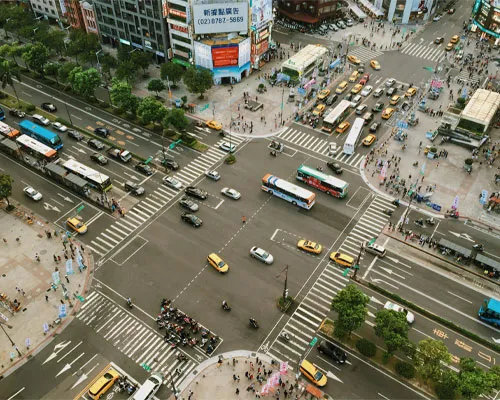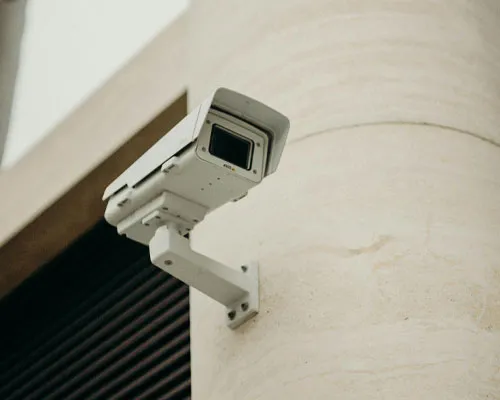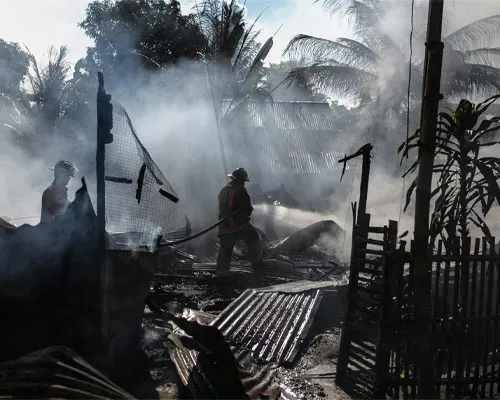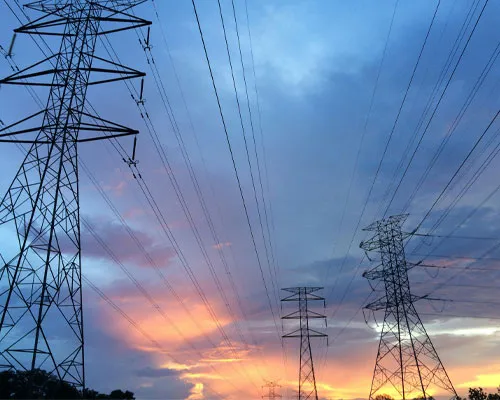Artificial Intelligence in the Smart City
Artificial Intelligence, the Mastermind of the Smart City
Artificial Intelligence in Smart Cities In the digital age, having only IT infrastructure and high-speed internet is not enough. What turns an ordinary city into a smart city is its ability to analyze urban data, machine learning, and intelligent decision-making. This capability is achieved with artificial intelligence (AI) and advanced algorithms.
Artificial Intelligence in a smart city is actually a dynamic ecosystem of data, new technologies, the Internet of Things (IoT), and digital citizens that are in constant interaction with each other. Artificial Intelligence plays a key role in coordinating urban resources, optimizing urban services, and managing infrastructure.
1. 🚦 Artificial intelligence in smart urban traffic management
One of the first and most widely used areas of AI in smart cities is urban traffic control and vehicle flow optimization. In densely populated cities with millions of cars, smooth traffic flow is almost impossible without intelligent traffic management systems. This is where AI and machine learning algorithms come into play, optimizing the flow of vehicles by analyzing real-time traffic data, predicting congestion, and managing smart traffic lights.

What’s the problem?
In traditional, non-smart cities, traffic lights, road signs, and public transportation systems are usually static and non-intelligent; they operate on a fixed schedule and do not respond to the current traffic and congestion conditions. This limitation causes several problems, such as:
• Heavy traffic during peak hours
• Unnecessary stops and congestion at intersections
• Increased air pollution and harmful gas emissions
• Waste of time and energy for citizens
How does artificial intelligence solve the problem in a smart city?
In AI-powered smart cities, advanced artificial intelligence systems analyze real-time data from multiple sources to make optimal traffic management decisions. These key data sources include:
• Traffic cameras equipped with machine vision to detect vehicle volume and flow
• Ground sensors at intersections to detect traffic and stops
• Vehicle GPS and online navigation and mapping apps to track routes and travel times
• Information from public transportation systems such as buses and subways
• Historical traffic data to identify daily and seasonal patterns
The performance of intelligent traffic management systems in smart cities
Real-time data analysis: Urban AI systems simultaneously process massive amounts of data from traffic cameras, sensors, vehicle GPS, and public transportation information to identify real-time traffic conditions.
Traffic Flow Prediction: Using machine learning algorithms such as Random Forest and LSTM, the system is able to predict future nodes and traffic jams and make the necessary decisions to avoid stops and congestion.
Adaptive Traffic Light Control: Traffic lights intelligently and dynamically adjust red and green times to maintain the smooth flow of vehicles and public transportation and reduce unnecessary stops.
Suggesting alternative routes to drivers: Smart navigation apps like Google Maps and Waze suggest routes with less traffic; but in a true smart city, these routes are determined based on real-time data analysis and city AI algorithms, not just public information.
📍 Real-life example: Barcelona (Spain)
Barcelona uses the “SMOOTH Traffic AI” system, which analyzes data from traffic cameras and sensors to identify busy routes and dynamically adjust traffic lights and bus routes. The results include:
✅ 25% reduction in travel time in the city center
✅ Energy savings and CO₂ emissions reduction of up to 15%
2. Smart security with the help of machine vision in smart cities
In traditional cities, urban security systems rely mainly on CCTV cameras and human resources, with the sole function of responding to incidents. But in a smart city, cameras do more than just record images:
Computer Vision: Cameras are capable of detecting suspicious behavior, emergency events, and unauthorized intrusion.
Intelligent data analysis: Using artificial intelligence and deep learning algorithms, the security system analyzes images and videos and issues immediate alerts.
Event prediction: The system can predict abnormal patterns and potential threats and take preventive measures before an incident occurs.
This combination of AI and machine vision enables urban surveillance, crisis management, and public safety to be performed intelligently, proactively, and dynamically, while reducing dependence on human resources and making incident response faster and more accurate.

What is machine vision?
Computer Vision is a branch of artificial intelligence (AI) that enables machines and intelligent systems to automatically process, analyze, and interpret images and videos. The technology works like the human eye and brain, allowing systems to recognize objects, people, motion, and patterns and make intelligent decisions.
With the help of machine vision, smart city systems can:
Identify suspicious behavior or security threats
Analyze and optimize traffic and vehicle flow
Automatically control and monitor urban infrastructure and the environment
What is the role of machine vision in smart city security?
In a Smart City, intelligent security systems using computer vision can take security and surveillance to a higher level. Key applications include:
Face Recognition: Identifying suspicious or authorized individuals in sensitive locations such as public transportation stations, airports, government buildings, and major urban centers. This capability enhances security and access control.
(Behavior Analysis):
The system is able to detect unusual or threatening movements, such as:
Constantly wandering in an area
Dropping a suspicious package
Running or walking on unauthorized paths
In such cases, the system provides an immediate warning so that security forces can respond quickly and prevent incidents from occurring.
Crowd or Overcrowding Detection: In urban gatherings or demonstrations, machine vision can identify hotspots and help prevent unrest.
Detecting weapons or dangerous objects: In Smart Cities, smart security systems use computer vision to detect weapons and dangerous objects. Advanced algorithms can detect the presence of dangerous or threatening devices in images and videos and send an immediate alert to security forces.
Real-world examples of machine vision use in urban security:
📍 Singapore City
Face recognition and unusual behavior detection systems have been installed at MRT stations and Changi Airport. If someone is loitering too much in an area, the system will automatically notify the local police officer so that preventive measures can be taken.
📍 London, England
With over 600,000 active cameras, machine vision systems are able to identify the faces of wanted suspects with over 95% accuracy, significantly increasing public safety.
3. Rapid response to crisis with artificial intelligence
One of the key features of Smart Cities is the ability to manage crises and respond quickly to emergency events. Crises can include earthquakes, floods, fires, mass accidents, disease outbreaks, or cyberattacks. In such situations, every second counts and quick decision-making can save lives.
By analyzing real-time data and predicting crisis patterns, AI acts as the brain of a city’s rapid response. These systems can make critical, coordinated decisions in a split second and activate intelligent emergency systems, including alerting emergency responders, providing safe evacuation routes, and managing emergency resources.

🔥 The urban crisis and its complexities
Crises usually occur suddenly and unexpectedly, and their management requires real-time data. Immediate and accurate decision-making is essential to reduce damage and save lives.
The main challenge of crises in traditional cities is the need for coordination between several different institutions, including:
Emergency
Firefighter
Police
Hospitals
Municipality
In traditional cities, this coordination is often slow, human, and uncoordinated. But in Smart Cities, artificial intelligence and data-driven systems automate this process, make it fast, and proactive, so that emergency response is coordinated and optimized.
What is the role of artificial intelligence in crisis management?
1. Crisis Prediction
By analyzing historical data, weather conditions, seismology, traffic, and even social media posts, artificial intelligence can identify the likelihood of crises before they actually occur.
📌 Example: Predicting landslides or floods in mountainous areas using precipitation, soil moisture, and land slope data.
2. Real-time Detection
Using environmental sensors (IoT), satellite imagery, GPS, and computer vision, smart systems can instantly detect crises such as fires or mass shootings.
📷 Example: City cameras detect smoke and fire, sending an immediate alert before an emergency call arrives.
3. (AI-based Coordination)
After detecting a crisis, intelligent crisis management systems with the help of artificial intelligence can:
Calculate safe evacuation routes
Send warning messages to residents
Dispatch the nearest rescue forces.
Open emergency routes to traffic.
⏱ All of these decisions happen in seconds, not minutes, which reduces damage and saves lives.
Real examples of smart cities in crisis management:
📍 Tokyo (Japan):
Has an intelligent earthquake warning system that analyzes the initial waves of an earthquake, up to 60 seconds before the main tremor, to warn residents. The system automatically stops trains and cuts off electricity.
📍 Los Angeles (USA):
Uses AI algorithms to analyze thermal images and detect forest fires before they spread.
📍 New Delhi (India):
AI is used to predict the spread of infectious diseases by analyzing symptoms reported on health apps and social media.
Navosh Company has also performed significantly in the development of smart cities and has implemented successful projects in this field. Click to view sample projects.
4. Optimization of energy consumption and municipal services
In the past, urban energy consumption and the provision of urban services were mostly based on fixed and uniform planning, without considering changes in time, space, and the real needs of citizens. However, in Smart Cities, advanced technologies such as Artificial Intelligence (AI), Internet of Things (IoT), and Data Analytics are used to:
Optimize energy consumption
Provide dynamic and targeted urban services.
Reduce waste of resources and increase citizen satisfaction.

Why is energy optimization important?
Urban energy consumption challenges include the following:
Increasing urban population leading to increased energy consumption
Climate change and global warming require sustainable consumption and reduction of pollutants.
Limited energy resources and dependence on fossil fuels
High costs of infrastructure maintenance and operation
As a result, Smart Cities strive to optimize and make energy consumption smarter, not just more, by utilizing artificial intelligence, the Internet of Things, and smart energy management systems.
The role of artificial intelligence and technology in energy optimization
By analyzing real-time and historical energy consumption data, AI provides optimal patterns for resource management. This is done through automated measurement, prediction, and control.
Examples of optimizing energy consumption in a smart city:
1. Smart Street Lighting:
Using light, motion, and weather sensors, street lights are only turned on when they are really needed.
📍 Example: The city of Amsterdam has been able to reduce electricity consumption in urban lighting by up to 40% by implementing this system.
2. Smart Buildings:
Ventilation, heating and cooling systems are automatically adjusted according to the presence of people, weather conditions and time of day.
Solar panels with intelligent consumption management store the electricity produced or sell it to the grid.
📉 Result: Significant reduction in electricity consumption during off-peak hours and reduced pressure on the urban grid.
3. Smart Grid Management:
Distribution of electricity based on actual consumer demand
Warning and prediction of outages
Coordination with renewable energy sources (solar, wind)
Example: Artificial intelligence can determine when solar electricity should enter the grid instead of traditional electricity.
4. Water, gas and waste management:
Smart sensors in water and gas pipes to detect leaks or abnormal consumption
Garbage collection only when smart bins are full
Data analysis to optimize the route of municipal service vehicles
5. Citizen digital engagement with smart government
In the past, the relationship between people and government was usually one-way: the government decided, the people implemented. But in a smart city, this model becomes a two-way, instantaneous, digital relationship. Now citizens are not just consumers of services, but companions, observers, and even co-decision makers in urban affairs.

What does digital participation mean?
Citizens can communicate with the government through digital tools (applications, platforms, websites, social networks), express opinions, register requests, make suggestions, submit reports, and play an active role in urban decisions.
This participation is an integral part of smart government in smart city architecture.
Why is digital engagement important?
• Increase transparency and public trust through open access to city data and information
• Real-world data-based decision-making for more accurate policymaking and planning
• Reduce the distance between people and government institutions by enabling direct and immediate communication
• Improve the quality of city services by receiving citizen feedback and opinions
• Strengthen a sense of belonging and social participation that involves citizens in city governance
Digital participation tools in smart cities
1. City apps:
Citizens can use their phones to:
• Report asphalt, traffic light, or trash damage
• File a complaint or make a service suggestion
• Participate in city surveys
• Perform services such as renewing smart cards, paying tolls, requesting permits, etc.
📍 Example: The “My Tehran” app is an example of an effort for digital participation in Iran.
2. Public Dashboards:
Platforms that provide open and transparent city data—such as air quality, traffic conditions, energy consumption, and budgets—provide citizens with direct access to city information.
⏱ Result: Increased city transparency, effective public oversight, and improved government and municipal accountability and efficiency.
3. Digital voting and survey systems:
Citizens are able to express their opinions online in real time on urban issues such as park creation, public transport rerouting or participatory budgeting, and participate in the smart urban decision-making process.
📌 Success story: The city of Barcelona uses the “Decidim” platform to enable collective decision-making and digital citizen participation in the form of online surveys and suggestions.
4. Chatbots and smart city assistants:
Citizens can communicate with the municipality or smart city services 24 hours a day, 7 days a week, without time limits, through messengers and digital platforms. They can ask questions, request services, or receive up-to-date city information, without the need to visit in person, and with fast and accurate responses from artificial intelligence.
5. Smart social networks:
AI can analyze social networks and online platforms and learn about feedback, complaints, and public trends about city performance. This data helps municipalities make better decisions and align their services with the real needs of citizens.
📌 Real-world example: In New York, smart city service chatbots respond to thousands of citizen requests and questions every day—quickly, accurately, and without time constraints, improving the citizen experience.
(Learning Cities)
By leveraging artificial intelligence and machine learning, cities of the future will not only solve urban problems faster, but also predict crises and challenges before they happen by analyzing real-time and historical data. Artificial intelligence is the beating heart of the Smart City; a city that listens to data, understands trends, and makes optimal decisions for citizens and infrastructure.
Using AI in a smart city increases energy efficiency, reduces traffic, and improves quality of life. To learn about global standards and successful projects, you can refer to the United Nations reports on sustainable cities and IEEE studies on smart cities.
